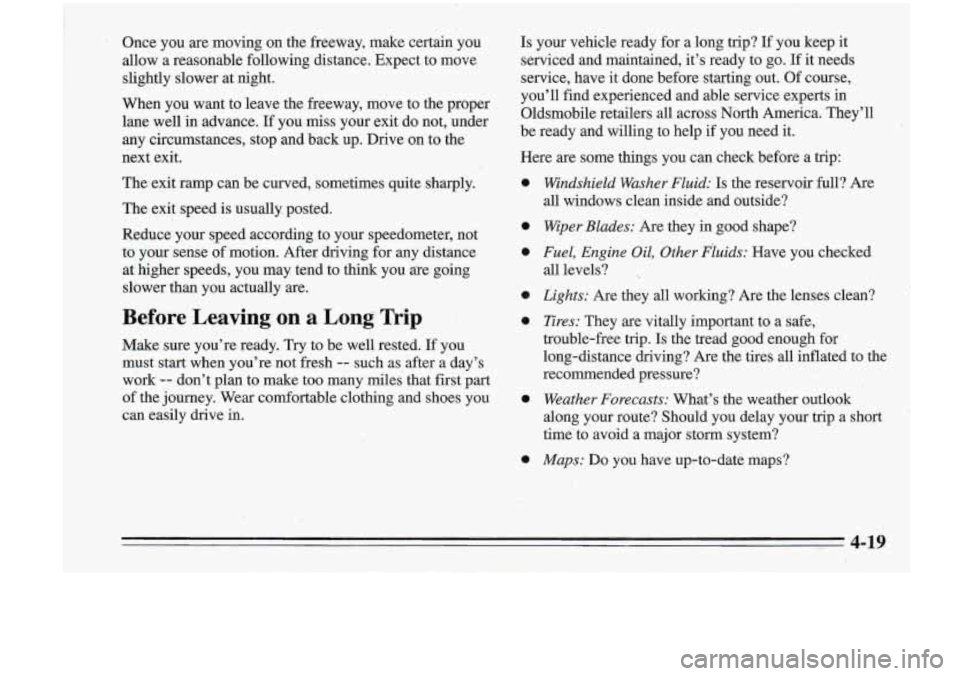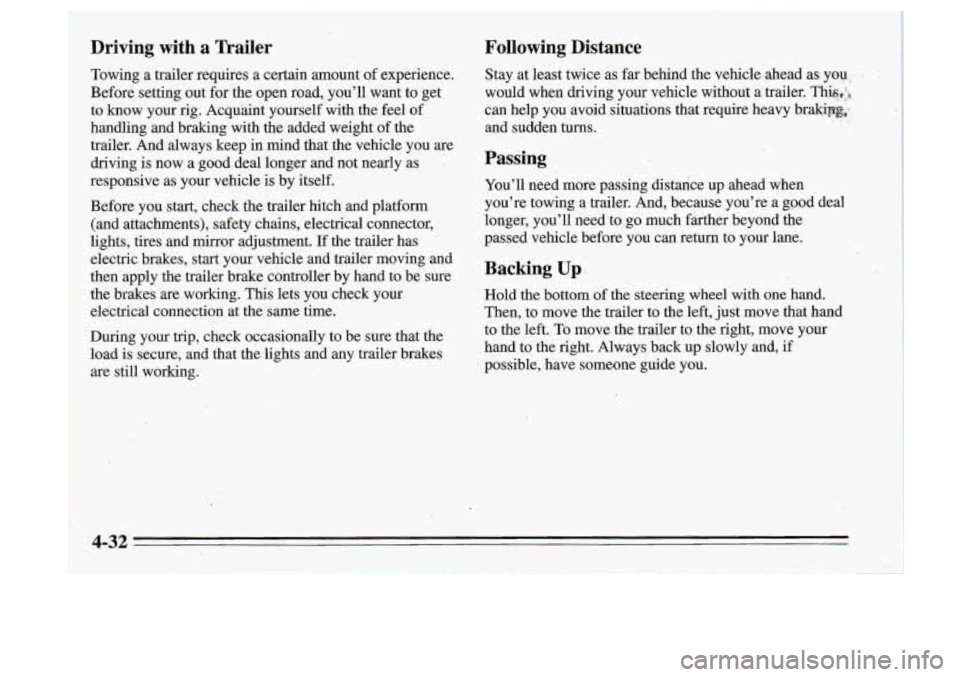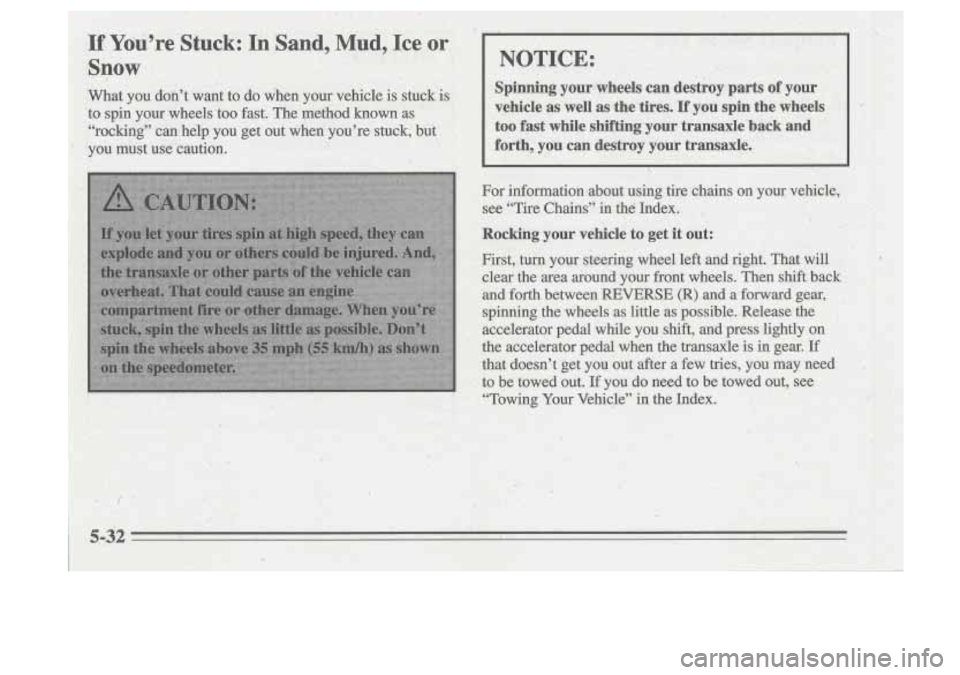Page 155 of 340
City Driving Here are ways to increase your safety in city driving:
Know the best way to get to where you are going.
Get a city map and plan your trip into an unkriown
part of the city just as you would for .a cross-country
trip.
0 Try to use the freeways that rim and crisscross most
large cities. You’ll save time and energy. (See the
next part, “Freeway Driving.”)
Treat a green light as a warning signal. A traffic light
is there because the corner is busy enough
to need it.
When a light
hulls green, and just before you start to
move, check both ways for vehicles that have not
cleared the intersection or may be running the red
light.
One
of the. biggest problems with city streets is the
amount of traffic on them. You’ll want to watch out for
what the other drivers are doing and pay attention to
traffic signals.
Page 157 of 340

3 Once you are m,oving on the freeway, make certain you
allow a reasonable following distance. Expect to move
slightly slower at night.
When you want to leave the freeway, move to the proper
lane well in advance.
If you-miss your exit do not, under
any circumstances, stop and back up. Drive on to the
next exit.
The exit ramp can be curved, sometimes quite sharply.
The exit speed is usually. posted.
Reduce your speed according to your speedometer, not
to your sense of motion. After driving for any distance
at higher speeds, you may tend to think you are going
slower’than you actually are.
Before Leaving on a Long- Trip
Make sure you’re ready. Try to be well rested. If you
must
start when you’re not fresh -- such as after a day’s
work
.-- don’t plan to make too many miles that first part
of the journey. Wear comfortable clothing and shoes you
can easily drive in. Is your vehicle ready
for a long trip? If you keep it
serviced and maintained, it’s ready to go.
If it needs
service, have it done before starting out. Of course,
you’ll find experienced and able service experts in
Oldsmobile retailers all across North America. They’ll
be ready and willing to help
if you need it.
Here are some things you can check before a trip:
0
0
0
0
0
0
0
,Windshield Washer Fluid: Is the reservoir full? Are
all windows clean inside and outside?
Wiper Blades: Are they in good shape?
Fuel, Engine Oil, Other FZuids: Have you checked
all levels?
,
Lights: Are .they all working? Are the lenses clean?
Tires: They are vitally important to a safe,
trouble-free trip. Is the tread gaod enough for
long-distance driving? Are the tires all inflated to the
recommended pressure?
Weather Forecasts: What’s the weather outlook
along your route? Should you delay your trip a short
time‘to avoid a major
storm system?
Maps: Do you have up-to-date maps?
,
Page 160 of 340
Winter Driving
Here are some tips for winter driving:
Have your Oldsmobile in good shape for winter. Be
You may want to put winter emergency supplies in
sure your
engine coolant
mix is correct.
your
trunk.
Include an ice scraper, a small brush or broom, a supply
of .windshield washer fluid, a rag, some winter outer
clothing, a small shovel,
.a flashlight, a red cloth, and a
couple of reflective warning triangles. And, if you will
be driving under severe conditidns, include a small bag
of sand, a piece of old carpet or a couple of burlap bags
to help provide .traction. Be sure you properly secure
these items in your vehicle.
4-22
Page 170 of 340

-
I
,'
Driving with a Trailer Following Distance
Towing a trailer requires a certain amount
of experience. Stay at least twice as far behind the vehicle .ahead as- you - .
Before setting out for the open road, you'll want to get would when driving your veh\
icle without a trailer. This$,
to know your rig. AcquQint yourself with the feel of can help you avoid situations that require heavy br-it
and sudden turns.
handling and braking with the added weight of the
trailer. And always keep in mind that ,the vehicle you are
driving is now a good deal longer
and not nearly as . Passing
responsive as your vehicle is by itself. You'll need more passing distance up ahead when
Before you start, check the.trailer hitch and platform you're' towing a trailer. And, because you're a good deal
(and attachments), safety chains, electrical connector, longer, \
you'll need to go much farther beyond the
lights, tires and mirror adjustment.
If the trailer has passed vehicle before you can return to your \
lane.
electric brakes, start your vehicle and trailer moving and
the brakes are working. This lets you check ,your Hold the bottom
of the steering wheel with one hand.
electrical connection at the same time. Then, to move the trailer
to the left, just move that hand
During your
trip, check occasionally to' be sure that the to the left.
To move the trailer to the right, move your
load is secure, and that the lights and any trailer brakes hand to the right. Always back up slowly and, if
are still working. possible. have someone guide you.
.. . ~.
then apply the trailer brake controller by hand to be sure Backing Up
?'
Page 185 of 340
Engine Overheating
You will find a,coolant temperature gage and a w&ng
light about a hot engine on your instrument panel.
See
“Engine Coolant Temperature Gage” and “Engine
Coolant Temperature Warning Light” in the Index. You
also have a low’coolant light on your instrument panel.
See
“Low Coolant Light” in the Index.
If Steam Is, Coming From Your Engine
NOTICE:
If your engine catches fire because you keep
driving with
no coolant, your vehicle can be
badly damaged. The costly repairs would
not be
covered by your warranty.
If No Steam Is Coming,From Your Engine
If you get the overheat -warning but see-or hear no ~
steam, the problem may not be too serious. Sometimes
the engine can get a little too hot when you:
Climb a long hill on a hot day.
0 Stop after high speed driving.
0 Idle for long periods in traffic.
’ Tow a trailer.
5-13
Page 204 of 340

If You’re Stuck: In .Sand, Mud, Ice or
Snow
What you doh’t want to do when your vehicle is ,stuck is
to spin your wheels too fast. The method known as
%vocking” can help you get out when you’re stuck, but
you must use caution.
NOTICE: ,.
Spinning your:wheels can destroy parts of your
vehicle as well as the tires. If you spin the wheels
too fast while shifting your transaxle back and
forth, you can destroy your transaxle.
For information >about using tire chains on your vehicle,
see “Tire Chains” in the Index.
~
Rocking your vehicle to get it out:
First, turn your steering wheel left and right. That will
clear the area around your front wheels. Then shift back
and forth between REVERSE (R) and
a forward gear,
spinning the -wheels as little as possible. Release the
accelerator pedal while you shift, and press lightly
on
the accelerator pedal when the transaxle is in gear. If
that doesn’t get you out after a few tries, you may need
to be towed out.
If you do need to be towed out, see
“Towing Your Vehicle” in the Index.
Page 214 of 340
Before closing the hood, be sure all the filler caps are on
properly. Then just pull the hood down and close it
firmly.
Engine Oil .. , ‘I: ~. ’. .I
LOW OIL
LEVEL
If the LOW OIL LEVEL
light on the instrument
panel co-mes on, it means
you need to check your
engine oil level right away.
For more information, see “Low Oil Level Light” in
the Index.
You should check your engine oil level regularly; this is
an added reminder.
It’s a
good idea to check your engine oil every time you
get
fuel. In order to get an accurate reading, the oil must
be warm
and the vehicle must be on level ground.
c
,3.1L.L82 (Code M) Engine
The engine
oil dipstick handle is the yellow loop near
the front of the engine.
Turn. off, the engine and give the oil a few minutes to
drain back into the oil pan. If you don’t, the oil dipstick ’
might not show the actual level.
Page 229 of 340

Brakes
Brake Master Cylinder
Your brake master cylinder is here. It is filled with
DOT-3 brake fluid. should
have your brake system fixed, since a leak means
that sooner or later your brakes won’t work well, or
won’t work at all.
So, it isn’t a good idea to “top off’ I I
your brake fluid. Adding brake fluid won’t correct a
leak. If you add fluid when your linings are worn, then
you’ll have too much fluid when you get new brake
.linings.
You should add (or remove) brake fluid, as
necessary, only when work is done on the brake
hydraulic system.
There
are only two reasons why the brake fluid level in When your brake fluid falls to a low level, your brake
your master cylinder might go down. The first
is that the warning light will come on. See “Brake System Warning
brake fluid goes down to an acceptable level during, Light” in the Index.
normal brake lining wear. When new linings
are put in,
the fluid level goes back up. The other reason is that
fluid is leaking out of the bree system. If
it is, you